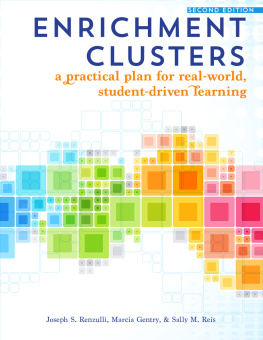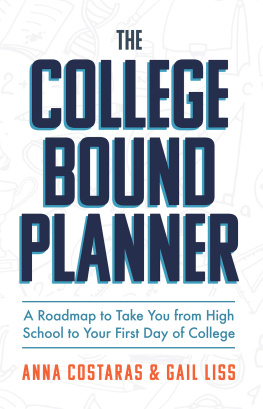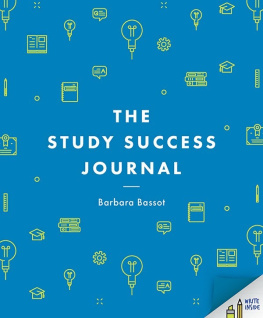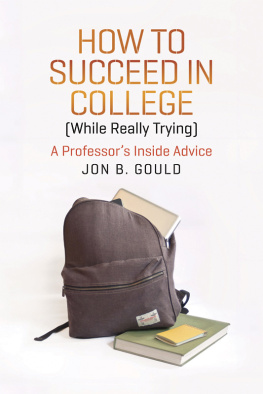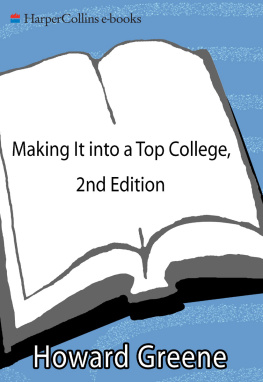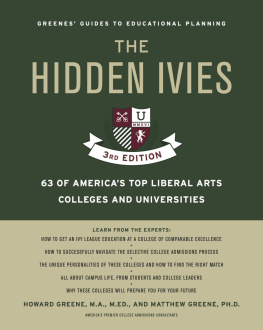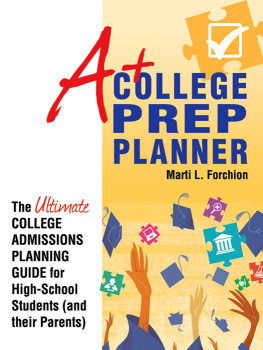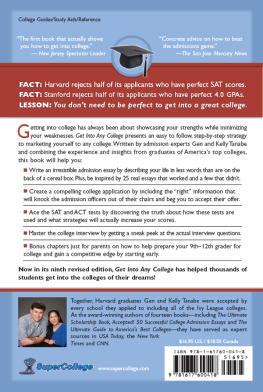GAP YEAR
GAP YEAR
How Delaying College Changes People in Ways the World Needs
JOSEPH OSHEA

2014 Johns Hopkins University Press
All rights reserved. Published 2014
Printed in the United States of America on acid-free paper
9 8 7 6 5 4 3 2 1
Johns Hopkins University Press
2715 North Charles Street
Baltimore, Maryland 21218-4363
www.press.jhu.edu
Library of Congress Cataloging-in-Publication Data
OShea, Joseph, 1986
Gap year : how delaying college changes people in ways the world
needs / Joseph OShea.
p. cm.
Includes bibliographical references and index.
ISBN 978-1-4214-1036-4 (pbk.) ISBN 978-1-4214-1037-1
(electronic) ISBN 1-4214-1036-2 (pbk.) 1. Gap years. 2. Non
formal education. 3. Experiential learning. 4. High school graduates
Life skills guides. I. Title.
LC45.3.O75 2013
378.198dc23 2013012252
A catalog record for this book is available from the British Library.
Special discounts are available for bulk purchases of this book. For more information, please contact Special Sales at 410-516-6936 or specialsales@press.jhu.edu.
Johns Hopkins University Press uses environmentally friendly book materials, including recycled text paper that is composed of at least 30 percent post-consumer waste, whenever possible.
In memory of my parents, Jim and Debbie OShea
Contents
Preface
I began this book after a period of great change in my life. My parents had both recently died, and I was trying to reconstitute my identity without them. I was growing increasingly reflective about my own life and development. I became motivated to understand how we come to be the people we areand what society can do to influence that path for a young person. My own personal quest for identity and character development ultimately gave rise to an academic interest in how students mature in what was then my new home, the United Kingdom. When I looked at the higher education environment in that country, I encountered a very interesting phenomenon that had not yet taken hold in my home country, the United States: the well-established precollege gap year.
This book is the product of my journey to explore and better understand these gap years. I feel fortunate to have had this opportunity to study education and human development, which are so central to our lives and have dominated my reflections on my own life. Indeed, the struggles I faced in capturing the experiences of participants in this study reflect some of my own difficulties understanding the complex and interrelated influences on me as a young person. Despite these obstacles, investigating this topic has helped shed some light on my journey in life. I hope this book contributes, in small part, to our understanding both of gap years and of how we come to be the people we are.
This book would not have been possible without the generous support and feedback I received from numerous friends, colleagues, and teachers, especially David Mills, Ben Eidelson, and Sherif Girgis. Thanks to the Rhodes Trust, which funded the studies out of which this project grew. I am also grateful to Project Trust and the participants in this study. Finally, I thank my family and my partner for their incredible patience and encouragement.
GAP YEAR
Introduction
The challenges of our time demand an educational system that can help young people to become citizens of the world. We need our students to be smart, critical, and innovative thinkers but also people of character who use their talents to help others.
Coming up with such a system is difficult, especially because human development is so complex and multifaceted. But one principal lesson from educational and psychological research is clear: We often develop most when our understandings of ourselves and the world around us are challengedwhen we engage with people and ideas that are different. Despite this insight, we often prioritize comfort and self-segregate into groups of sameness. We tend to surround ourselves with people who think, talk, and look similar to us. So how do we encourage young people to engage with difference in ways that catalyze their development?
Traditionally, the U.S. higher education system has championed the idea of liberal arts education as a means to engage students with difference, to expand their worldview beyond their known universe. Harvard Universitys Committee on General Education highlights this approach:
The aim of a liberal education is to unsettle presumptions, to defamiliarize the familiar, to reveal what is going on beneath and behind appearances, to disorient young people and to help them to find ways to re-orient themselves. A liberal education aims to accomplish these things by questioning assumptions, by inducing self-reflection by encounters with radically different historical moments and cultural formations. (Harvard University 2007, 12)
However, formal classroom education alone cannot accomplish this aim. The classroom is limited in its ability to engage students with difference and contribute to their development as able citizens. We also need experiential influences and critical self-reflection to cultivate our dispositions and moral sentiments.
Taking a gap yearin which people delay college for a year and live and volunteer in communities radically different from their ownis one promising approach to supplementing formal education. Although the rising popularity of the gap year in the United Kingdom, the United States, Australia, and elsewhere has sparked a debate about its benefits, little research has been done to examine these effects.
In this book I argue that gap years can be a powerful educational experience. They can contribute to growth in how young adults make meaning of themselves, their relationships, and the world around them such that they develop capacities and perspectives for effective citizenship.
The Rise of the Gap Year
The gap year developed from the British experience. Scholars suggest that the European Grand Tour was the historical precursor to the modern gap year (Heath 2007; King 2007; Simpson 2004). During the late seventeenth to the early nineteenth centuries, the Grand Tour was a form of travel for young British aristocratic men to explore art, history, and culture in Europe. It served as an extended educational experience: the travel [practice] of a young man of rank often in his teen, undertaken as the crown of his liberal education (Cohen 2001, 129). Scholars also argue that the legacy of the British Empire and the hippie trail of countercultural youth who traveled the world in the 1960s and early 1970s have contributed to the growth of the modern gap year (Heath 2007, 100; Simpson 2004).
Gap years have been become more common in recent years. For instance, in 1986 in the United Kingdom, only an estimated 5.5 percent of college applicants took a year out before college (Ansell 2008). However, of the 391,000 people with an accepted application to a UK university in 2006, it is estimated that about 45,000 to 50,000 (1213 percent) had taken or would take (through deferred admission) a gap year (Ansell 2008; Heath 2007; University and Colleges Admissions Service 2006). Gap years have also become increasingly common in Australia. It was estimated that in 1974 only about 4 percent of students took a gap year, but by 2004 the proportion had risen to 11 percent (Birch and Miller 2007). The practice has even spread to Japan, with some universities encouraging their students to take a gap year (Ito 2011).
Next page

